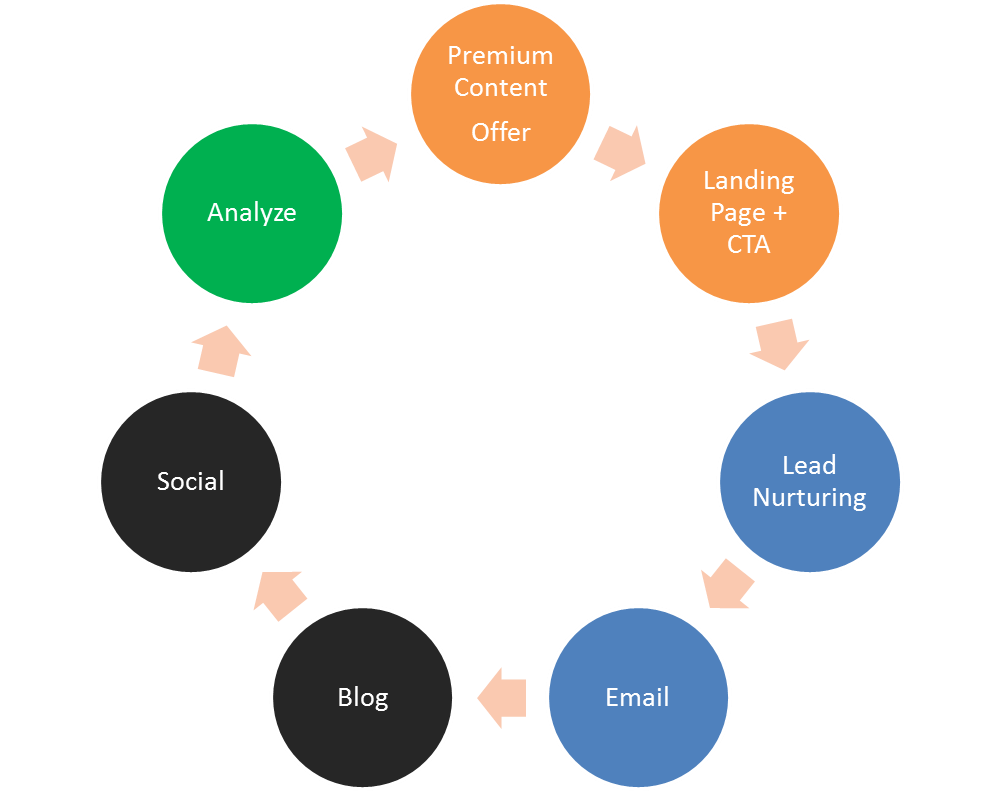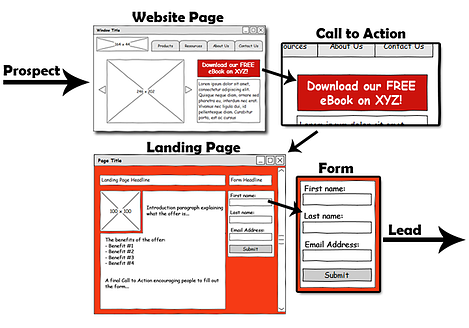 More and more businesses are using inbound marketing to accelerate sales growth. They boost sales by syncing their sales process with their prospects' buying process. The process of generating leads through inbound marketing is fairly simple.
More and more businesses are using inbound marketing to accelerate sales growth. They boost sales by syncing their sales process with their prospects' buying process. The process of generating leads through inbound marketing is fairly simple.
- Prospects come to your website to educate themselves with the content you produce with blogging and other content creation.
- They become leads by exchanging their contact information for a premium content offer like an eBook.
- Leads are nurtured with email marketing to provide them with the right information as they progress through their buying cycles.
- Marketing-qualified leads are passed to the sales team for customer acquisition.
While there's a little more to it than those 4 steps, that's basically the inbound marketing process. So why do some companies succeed in driving growth with inbound marketing and others fail? There are 3 critical factors that determine the success of an inbound marketing program.
Integration Between Sales and Marketing
Successful inbound marketing programs integrate with the sales process. The sales team is involved from the very start and provides constant feedback to dial in the inbound marketing program. The sales team knows the customer buying process better than anyone, so their input is critical. They help frame the inbound marketing process by:
- Helping marketing define the buying process. The sales team knows what information buyers need as they progress through the buying process and how long they generally take to progress through each stage. This information helps marketing develop meaningful lead nurturing processes. The 3 stages of most buying processes are:
- performing research for a problem that they know needs to be solved; and
- establishing buying criteria for their final decision;and
- evaluating potential vendors.
- Cascading sales revenue goals into lead generation and web traffic goals. In order to establish meaningful targets for the inbound marketing program, sales needs to work with marketing to determine how much web traffic is necessary to produce the leads needed to meet revenue targets. You can find a detailed description of this process here.
- Helping marketing determine the criteria for marketing-qualified leads (those leads that are ready for sales outreach.) By providing feedback, the sales team can help ensure the quality of the leads they receive from marketing.
One of the keys to a successful inbound lead generation program is the integration of sales and marketing.
Inbound Marketing Campaign Coordination
The unit of measurement for inbound marketing is a campaign. The image below (courtesy of HubSpot) illustrates the elements of an inbound marketing campaign.

Companies that successfully use inbound marketing do each of these tasks in a coordinated fashion. They run inbound marketing campaigns for each product line, industry specialization and geographic specialty. If you don't do one of the steps, you will drastically limit your sucess in generating leads. To illustrate the concept, here's another image from HubSpot that shows the inbound lead generation process.

I can't tell you how many times I've seen companies that publish blog articles several times weekly that don't include calls-to-action in their articles. They will never generate any leads from their blogging efforts because they've omitted the first step in the lead generation process - the call-to-action that sets the process in motion in which the lead exchanges contact information for a content offer that educates them on the problem they're trying to solve. This is just one example of how the process can break down. For inbound marketing success, it's important to do ALL of the elements of the process in a coordinated fashion.
Commitment to the Inbound Marketing Program and Consistent Execution
Inbound marketing is an ROI-proven technique to generate revenue. However, success doesn't happen overnight. It takes time for Google to crawl your site and see that you're publishing quality content on a regular basis about the topics your buyers search for with their queries. It takes time for your content to be shared through social media to generate leads. 90% of the leads that come to your site aren't ready to buy, so it takes time for your lead nurturing campaigns to help them through their buying processes and convert them to customers. You'll start seeing some results in the first few months, but lead generation really starts ramping up 9-12 months after implementation.
Companies that successfully use inbound marketing to generate revenue realize the arc of the return on their investment and commit to a long-term change in the way they produce revenue. Like growing tomatoes, consistent care and nurturing produces fruit with inbound marketing.
Summary
When done properly, inbound marketing produces revenue growth for almost all types of business. It's important to understand what to expect when you implement an inbound marketing program and commit to a new way of producing revenue. Successful companies align their sales and marketing processes in each and every step of an inbound marketing campaign. Lastly, you need to perform all of the inbound marketing functions in a coordinated fashion. Most companies successfully using inbound marketing to grow revenue work with expert consultants who help them get results.









